A guide to create an SEO friendly Website.
Since everything is online in this digital era, SEO is the key element to glorify on SERPs. Websites need to be SEO-friendly to achieve online success. Almost every one of us wants to improve our SERP rankings and gain more organic traffic. In this write-up, we’ll discuss a complete checklist that can help you easily create an SEO-friendly website. Let’s begin by understanding what an SEO-friendly website is and its need. Then, we’ll discuss how to create it effectively.
What is an SEO-friendly website?
An SEO-friendly website is one that is easily crawlable and indexable by search engines, easily navigable and satisfying to use, provides the user with the information they seek, and is optimized for search engines. In simple terms, an SEO-friendly website is technically sound, user-friendly, as well as search-focused.
Why does a website need to be SEO-friendly?
Websites must be SEO-friendly, as we covered above, but why? Why is it necessary? The answer is simple, until and unless Google and search engines can’t understand what your website is about, you can’t rank on search engine results. That’s why your website should be easily crawlable and indexable to search engines so they can crawl and index your website and rank it on SERPs. And only then will you be visible to your users. By creating an SEO-friendly website, you can reach your targeted audience more efficiently, gain organic traffic to your site and even get loyal customers.
Now that you have understood what an SEO-friendly website is and its need, let us explain how to create an SEO-friendly website.
A checklist to create an SEO-friendly website
A website’s design and performance are important factors that can either impact the SERP ranking of your site or even hinder it from ranking on search engine result pages.
Each element of your website must be enhanced and optimized to glorify on SERPs. You can follow this checklist to ensure that your website is search engine friendly as well as user-friendly.
#Setup your website’s technical aspects
The foremost thing in this checklist is to put a technical foundation in place for your website. To ensure search engines locate, crawl and index your website, you need to help search engines and make it easier for them to uncover your website. The following steps will ensure your visibility and only need to be set up once.
1. Set up Google Search Console
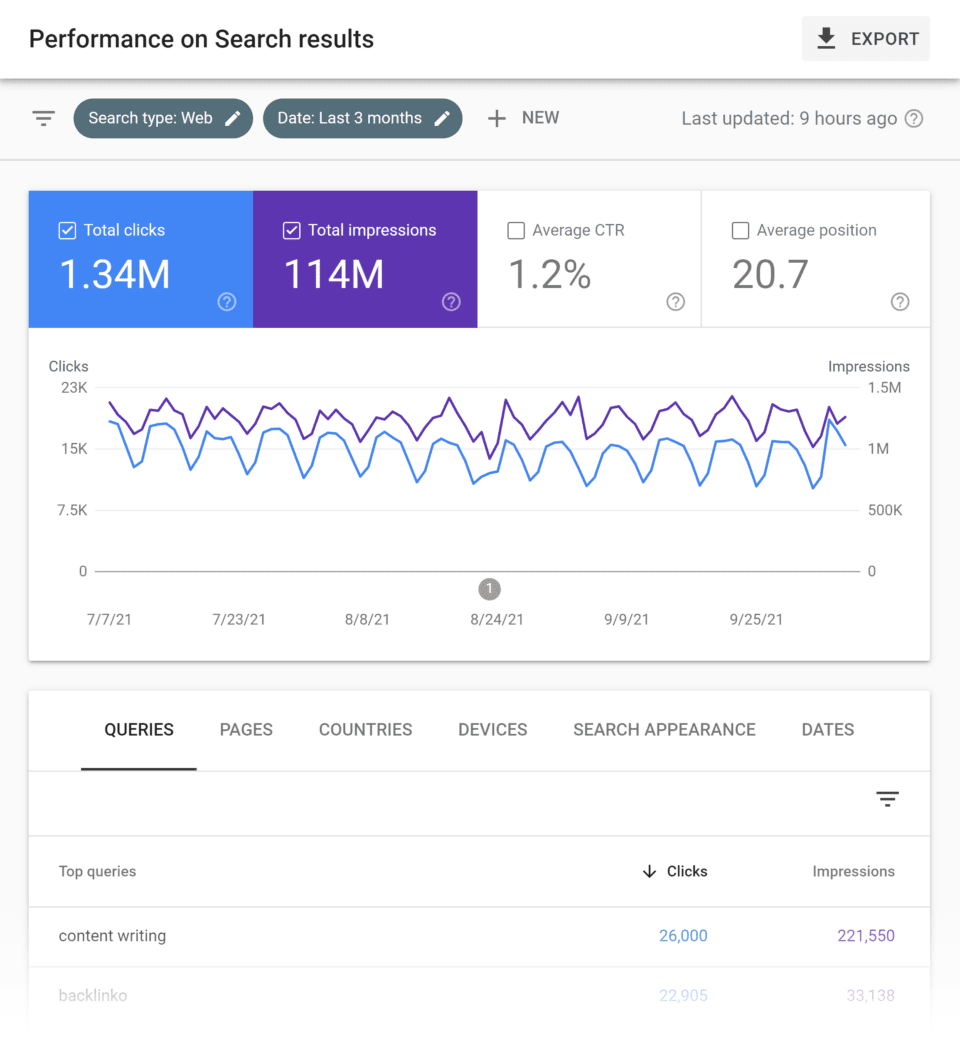
Google Search Console ( GSC ) is a must-have tool for search engine optimization. To be more confident with your SEO, you must include this multi-featured tool in your SEO list. This tool helps you to analyze your website’s performance and search traffic on Google.
We included GSC in our list of essentials for creating an SEO-friendly website because it allows you to check your indexing status, crawl errors, search queries and optimize the website’s visibility.
2. Set up Bing Webmaster Tools
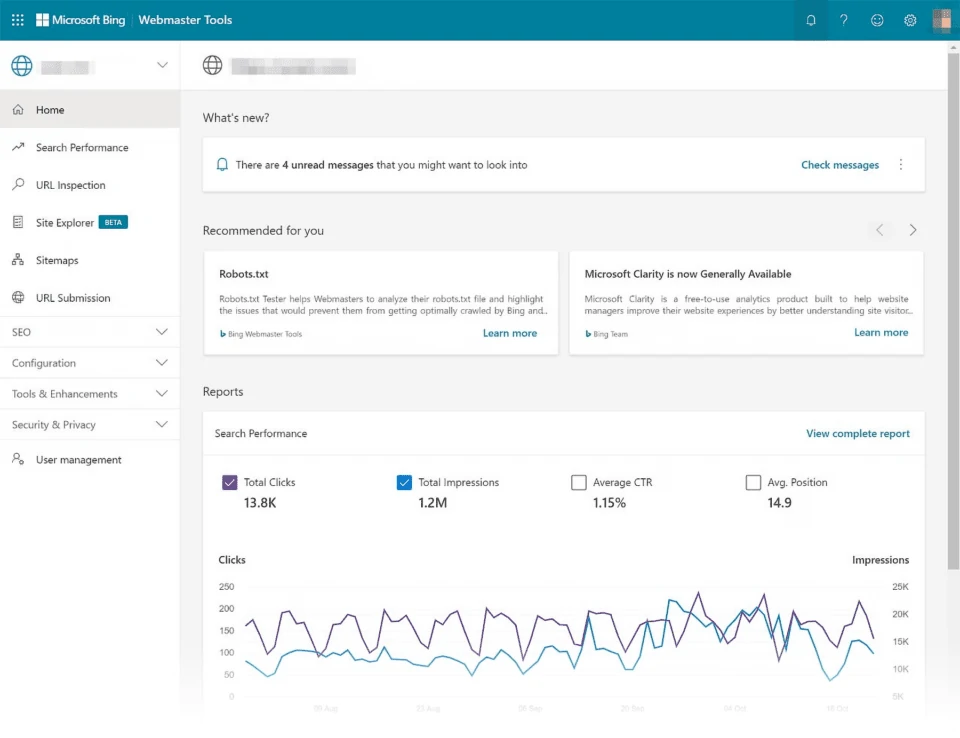
Bing webmaster tool is more similar to Google Search Console. Bing is the second biggest search engine at present. If you want to glorify on Bing besides Google, you can set it up for your website. This tool can help you to get data from Bing’s search engine and allow you to optimize it for Bing.
3. Set up Ahrefs Webmaster Tools
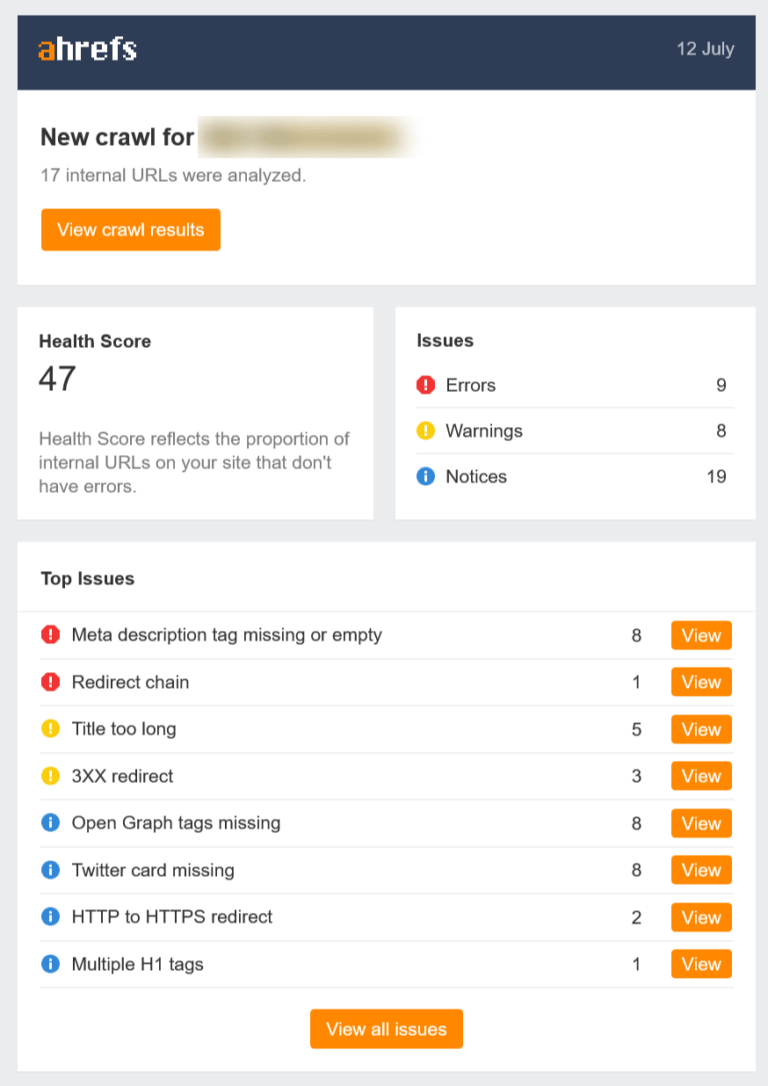
Besides Google search console and Bing webmaster tool, Ahrefs Webmaster Tools is another free tool that can help you enhance your website’s SEO performance. This tool audits your website and can suggest areas for improvement. This can help you with the elements that are not suggested by the Google Search Console and Bing Webmaster Tool, such as backlinks and keywords with their SEO metrics and any SEO issue your website is undergoing, along with their solutions. It also provides you with details of SEO metrics like Search Volume, Keyword Difficulty, and Traffic Value to give you a detailed insight into your website. You can work on the areas that need your attention and improve your website’s SEO.
4. Keep your website accessible only to one domain.
We all know that a single website can be accessed using many URLs.
For instance-
- http://yourdomain.com
- http://www.yourdomain.com
- https://yourdomain.com
- https://www.yourdomain.com
All these URLs can direct you to a single domain. Isn’t it good? Yes, but it can affect your website’s authority and credibility. But how?
Although all these URLs can lead you to a single domain, Google considers all the URLs different. This results in the dilution of link juice which can affect the SEO and ranking of your site.
When you designate a single URL as the canonical version, the search engine can count all links pointing to the various versions as links to the canonical version, preventing link dilution and improving your site’s ranking.
5. Create and submit a sitemap
When talking about SEO, we can’t overlook the Sitemap. It is a file where you put all the information about pages, images, videos, etc., and specify the relation between them to tell search engines about your site and its important pages. Search engines visit this file before crawling your site, go through it and then crawl your site more efficiently.
Many CMSs, like WordPress, Blogger, Wix, etc., create the Sitemap for you.
This is how you create a sitemap in the Yoast SEO plugin.
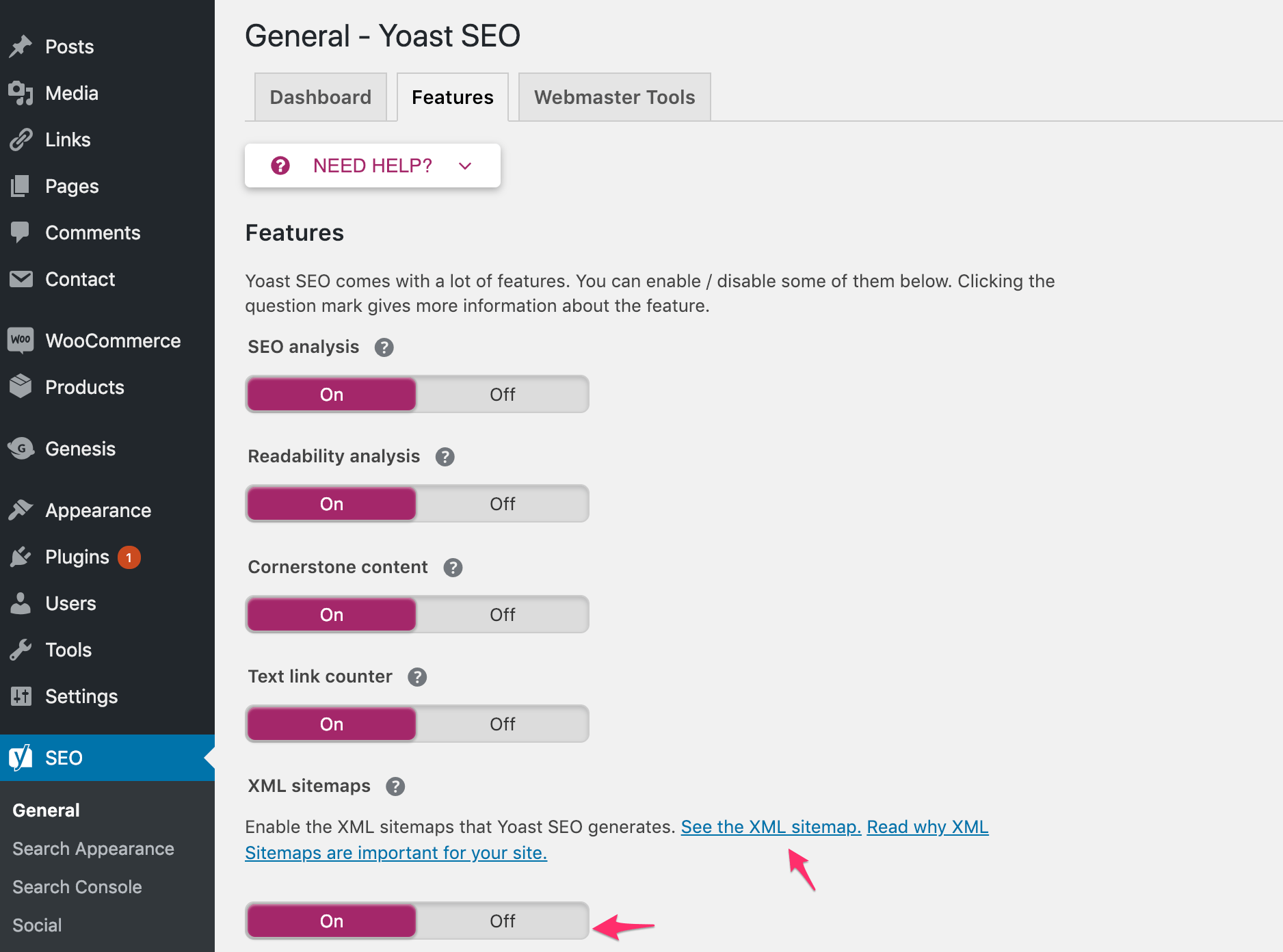
However, if you are using any other CMS that does not include this functionality, you must create it and submit it to search engines.
Websites that are very large, containing many isolated pages, a few links, or rich media must include a sitemap in their SEO list.
If your site is appropriately linked and all the important pages can be easily navigable, Google can easily discover your site. You can skip the Sitemap if your site is small, appropriately linked, or you don’t have much media on your website.
However, sitemaps will always benefit you as they will speed up the crawling process.
6. Create a robots.txt file
A robots.txt file tells search crawlers which URLs or pages the crawlers can access and which can’t.
Robots.txt files are used for managing crawler traffic to your website and are usually used to keep certain files away from Google.
Generally, search engines crawl everything they come across, which is a great thing, but there are times when you don’t want it.
You can use robots.text file to avoid crawling some of your site’s unimportant pages or similar pages.
For example, this is robots disallow directive-
User-agent: * Disallow: /wp-admin/ Allow: /wp-admin/admin-ajax.php/
Before creating a robot.text file, you must check if there is an existing robots file of your site created by your web developer or the CMS you are using. This will make sure that your important pages are accessible to search engines.
You can go with “yourdomain.com/robots.txt” and check if there’s something. You can also visit the coverage report on Google Search Console to look for any unnecessary robot rules that may block certain pages on your site.
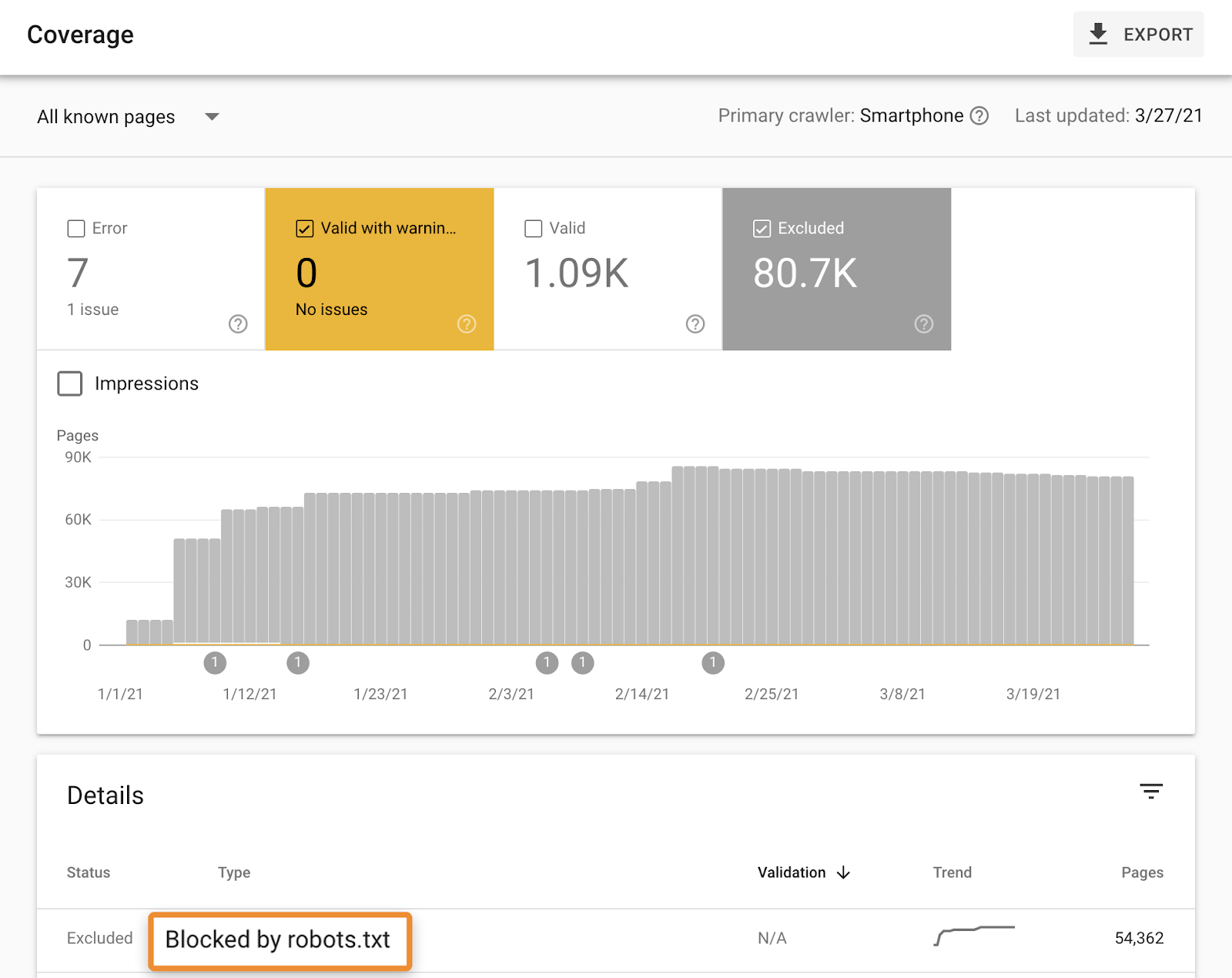
7. Check your website’s indexability.
Indexability is the capability of search engines to analyze a webpage and store it in a database. A tag named “Noindex” blocks crawlers from indexing the page to restrict it from appearing in search results. These tags are useful when you don’t want certain pages to appear in search results, such as the thank you page, admin and login pages, internal search results, etc.
With a Noindex tag, the crawlers may be able to crawl a page, but it may not appear in SERPs. The following are the instance of Noindex tags:
- i) “Noindex” value in the robots meta tag in the robots.txt file
- ii) “Noindex” or “none” value in x-robots-tag in the HTTP response header
You must look for the Noindex tags on your site to ensure that your important pages do not get Noindexed. You can check for the Noindex tags in the Coverage report of Google Search Console.

8. Strategize the structure of your website
Before creating a website, you must plan your website structure. In SEO, the structure of a website plays an important role.
The placement of web pages, the internal linking on your site, and the optimization of your top-level pages can impact your visibility on SERPs. Let’s see how:
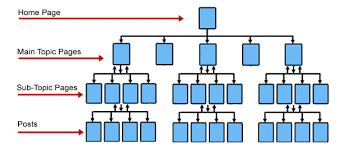
- Placement of Web pages– The important pages of your website should not be placed far away from the homepage. Try to keep them just two or three clicks away from your website’s home page. This is because the pages located far from the home page or deep within site are less frequently crawled.
- Internal links – In SEO, Internal linking is a ranking factor that signals search engines to crawl linked pages more often. When the important pages of your site are placed properly and linked in the site navigation, they may get crawled often and get an additional SEO boost.
- Keyword optimization – The category pages on your website can also rank on SERPs. You can optimize your category pages or top-level pages for the keywords in demand. This will boost your website’s SEO.
#Make your website User-friendly.
User experience on your site is an important aspect that search engines pay attention to from an SEO point of view. The only way to rank on SERPs is to have a user-friendly and delightful website.
You need to set up all the points in this section once while creating your website.
1. Secure your website using the HTTPS version.
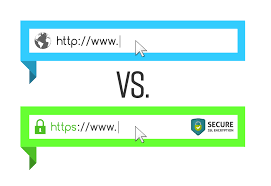
HTTPS is a lightweight ranking signal that can help you boost your SEO and ranking on SERPs.
Google prioritizes websites having HTTPS over HTTP because it is an advanced and secure version. It shields the communication between a browser and a server from hackers and attackers. You need to get an SSL certificate from your hosting provider to upgrade HTTP to HTTPS.
SSL certificates verify your website’s ownership, convey trust to users, and keep your data secure.
2. Mobile-friendliness
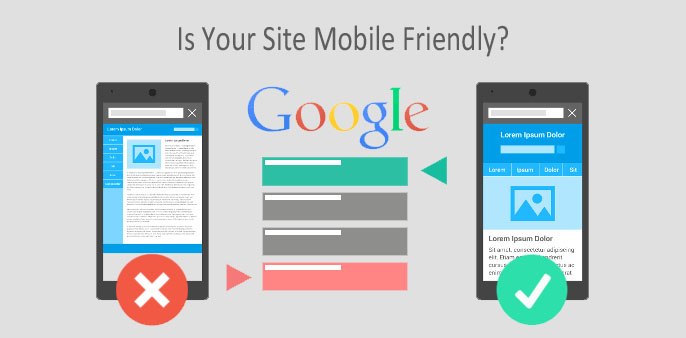
Mobile friendliness is an important SEO aspect that can boost or hamper your website’s ranking. As per Google’s algorithm, Mobile friendliness is an important ranking factor. Since users can access your site with different devices, your website must be easily accessible to all devices.
Google indexes and ranks the mobile version of the web pages. Therefore, to be an SEO-friendly website, your website must be mobile-friendly first.
To assess whether your site is mobile-friendly or not, you can test it using Google’s mobile-friendly test.
3. Site loading speed
Site loading speed is another metric used to measure the user experience on your site. Users are more likely to stick around your website if your site loads faster; else, there are plenty of options out there, and they won’t waste even a fraction of a second waiting for your website to load. Google considers the loading speed of your site to rank content on SERPs along with the relevancy of the content.
Ahref’s Site Audit tool’s performance report can help you analyze your website’s speed issues.

4. Avoid intrusive interstitials and dialogues.

Intrusive interstitials and dialogues are page elements for promotional purposes that block the user’s view of the content. Both mask the content that may frustrate the users and lower their trust and interest in your website.
According to Google, a page without dialogues and interstitials is a serveable page that can enhance the user experience on the site.
Google suggests instead of using full-page interstitials, you can use banners that take up only a small portion of the screen. The banners make sure that users and search engines can access the content immediately after landing on the page.
#Create and Maintain a search-focused website
In SEO, everyone says that content is the king, and we believe it is the kingdom. Every aspect of your website should be perfect that can help you create and maintain an SEO-friendly website. Your website should be search-focused, which will enable you to shine on the SERPs.
All the points we are going to discuss in this section need to repeat with each content you create. These are useful tips that can help you improve your SEO.
1. The right keyword choice.
The essential factor to consider when discussing how to create amazing content is picking the appropriate keyword. Right keyword choice is important because it makes no sense to invest your time creating content nobody searches for. To attract and engage users on your site, you need to create content people are searching for and are interested in reading. The ideal way for this is to perform keyword research, choose the right keyword, and optimize your content around it.
Before picking the keyword from your niche, you must check its traffic potential, difficulty, search intent, keyword trend, etc., and analyze and choose the right one.
We have covered a complete article on keyword research. If you want details, you can check it out.
2. Keyword frequency in SEO.
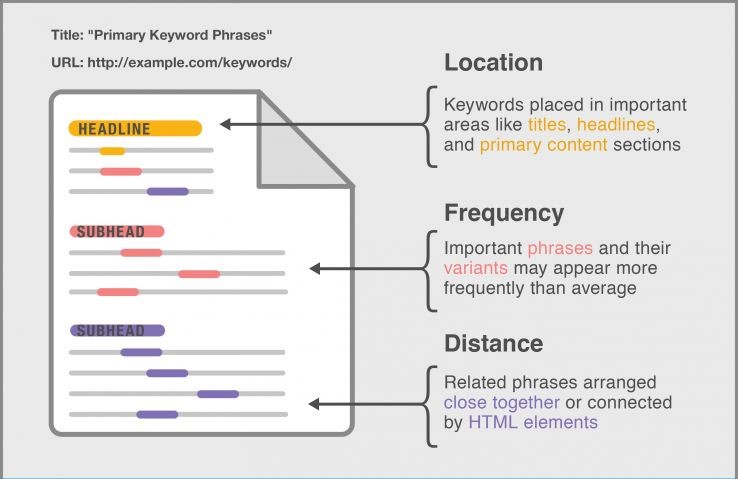
In SEO, along with choosing the right keyword, you must pay attention to including the relevant keyword and the frequency of the keyword in your content. Now, Google has become smarter than ever and can understand the context of your content. To improve your website SEO, first, you must include the targeted keyword within the first 100 words of your content. This helps search engines and users to connect with your content.
Next, you must use your targeted keyword naturally throughout your content without stuffing it. Keyword stuffing was used earlier to get a higher ranking on SERPs; however, with time, keyword stuffing is prohibited, and now it can hamper your website’s ranking greatly.
3. Craft interesting, unique, and useful content and make it readable.
As we said, content is the kingdom- it has all the potential to attract and hold users. It’s simple: If your content is good, users will stick to you; if not, they’ll leave your site immediately. Also, it is one of the strongest ranking factors that can boost your SEO.
Your content should satisfy the user’s query and be fresh, unique, well-organized, and easy to read. Some of your users might want to link back to your content if it’s link-worthy. That is why your content should be sound enough to satisfy the users as well as the linkers.
Linkers are the ones who link the content back from their websites, which is called a backlink. Since we all know the importance of SEO for a website, backlinks cannot be ignored.
Backlinks are another crucial ranking factor. The more unique websites link back to the site, the more authoritative it becomes, enabling it to rank higher on search results. By getting backlinks, you can appear higher on SERPs and attract more traffic to your site.
Therefore, you must create engaging content if you want it to draw in more readers and receive more backlinks.
Some tips for creating SEO-friendly content:
- Use your targeted keywords within the first 100 words
- Use H1 Tags for the post title and H2 Tags for subheadings
- Mind the frequency of targeted keyword
- Avoid keyword stuffing
- Do not create a non-ending text. Divide it into smaller sections using H1, H2, H3 tags, and so on.
- Include images, charts and videos-they make the content attractive and engaging.
- Use simpler and shorter sentences.
4. Use outbound links to relevant resources.
We very well know that outbound links are not a ranking factor; however, using outbound links, you can cite your source and provide valuable material on the topic to your users.
These outbound links add value to users as they can find the details on the content you have covered to learn more about the topic. On the contrary, they help your website build visibility and add credibility to your content.
According to Google-

5. Use internal links
Unlike outbound links, internal linking is an important ranking factor in SEO. To create an SEO-friendly website, you must have a great internal linking network on your website.
Internal links are the links from one relevant content to another within your website. These help search engines, as well as users, navigate to your site. Users can find relevant content easily by following the links that improve the user experience on your site, and search engines better understand your content and grasp your website’s structure using internal links, enabling them to rank your content even better.
The content without internal linking is considered orphaned, and it takes time for a search engine to crawl it. Therefore, you must provide internal links to and from your fresh content to facilitate faster crawling.
Internal linking is a valuable SEO element you must include in your strategy to create an SEO-friendly as well as a user-friendly website.
6. Optimize your images
Another thing that is important for Search Engine Optimization is the Images. Images are catchy and grab attention readily, so you must include images in your content to make it appealing. Images are descriptive, so they help users understand the text’s context more easily. However, images can affect SEO if you haven’t optimized them properly. Your image should not be too large or too small, and you should use the right image format. The image size can affect the page loading speed resulting in a poor user experience.
When we say image optimization, we mean the following:
- Compress the images – If your image size is too large, you need to compress the image properly. There are numerous plugins and tools out there you can use to compress your images, such as ShortPixel, Canva, Smush, etc.
- The image file names – Use descriptive image file names. Search engines can read and understand the image names. For SEO, you must use a name that clearly describes the image.
- Use image alt texts – You must use descriptive alt text for your images. Alt text can help when the browser can’t load images properly. Users can read the alt text and determine what the image is all about. Also, these can help visually impaired users to know about the image. Google uses it to understand and index your image content to rank it on Google images.
- Use unique and fresh images.
We have covered a complete article on Images optimization for SEO. If you want to learn more about it, you can visit it by clicking the link.
7. Optimize your title tag
A Title is the first thing users encounter while searching for content. You must optimize your content because it is one of the ranking factors (although a small one), and it is visible on the SERPs. That’s why you should:
- Keep your title short; fit it within 60 characters.
- Make it eye-catchy.
- Include your targeted keyword in the title.
8. Optimize your meta description tag
A meta description is the description of your content that is visible on the SERPs. This is the first impression of your content, and users will form an opinion about your content based on it that can compel or discourage them from clicking it. You only have a few seconds to entice the users, so ensure readers that this is the information they are looking for. Here are some tips for creating your description:
- Make it clear and compelling.
- Don’t make it longer. Keep it within visible limits.
- Keep it relevant to your content.
- Include your targeted keyword in it.
- Make unique descriptions for every content.
9. URL optimization- Use short and descriptive URLs
URL is another thing that appears on SERPs, along with titles and meta descriptions. Users might notice the URLs when searching for their queries, so you must keep users in mind while creating the URLs of your web pages. Therefore, the URLs of your web pages should be optimized for search engines as well as users.
Some tips for URL optimization:
- Don’t make it too lengthy and overly nested
- Use a short and descriptive URL that tells exactly what the page contains.
- Include the targeted keyword
- Remove unnecessary and unrelated words
- Use hyphens to separate the words
- Don’t use capital letters
10. Add schema markup
Schema markup is code or structured data that helps search engines to understand your content better and display it in search results.
Schema markup powers rich snippet results, which enjoy higher CTR than other search results.
You can use schema markup for your content to increase the likelihood that it will show up in rich results and drive more traffic to your website.
At present, Schema markup has become an important element of SEO.
It converts your unstructured data into structured data and informs search engines about your content more precisely, which helps it to crawl and index even better and raise its ranking in SERPs accordingly.
To Conclude:
Handling a Website’s SEO is not an easy task. It demands a lot of work, and there’s no shortcut to this. If you desire to create an SEO-friendly website, you need to polish each and every element to compete in this SEO world, and thereafter, you can achieve a higher ranking on SERPs and be proud of your work.
You need to screw up all the aspects we have discussed above to boost your SEO and traffic to your site.
You must plan your SEO strategy properly. It takes time for SEO to implement and show results.
Now that you’ve understood how you can create an SEO-friendly website, start up your work and skyrocket your website’s online presence.
Good luck!
